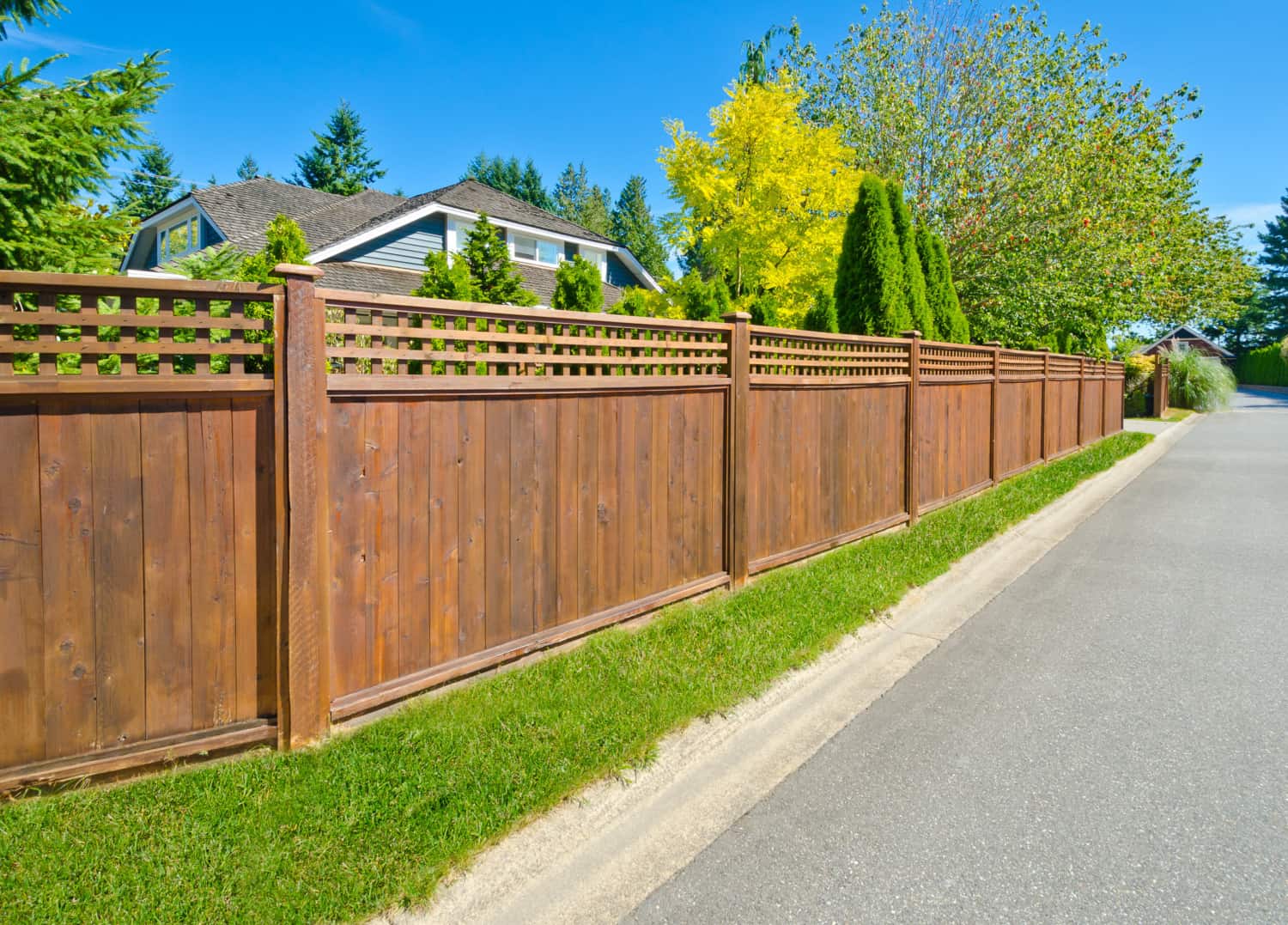All Categories
Featured
When it comes to preserving a wooden fence, property owners usually deal with the decision of whether to tarnish or repaint. Both options have their advantages and disadvantages, and the selection inevitably depends on your aesthetic preferences, the type of timber, and just how much upkeep you want to commit to. Here's a thorough contrast to help you make an educated choice.
The Basics of Painting and Staining
Painting involves covering the wood with a nontransparent layer of shade. It offers complete insurance coverage, concealing the wood grain while offering excellent defense versus ecological elements.
Discoloring penetrates the timber, boosting its all-natural beauty while adding a safety layer. Relying on the kind, spots can vary from transparent to solid, allowing differing levels of wood grain exposure.
Pros and Cons of Painting
Pros:
Wide Range of Color styles: Repaint deals endless shade choices, allowing you to match your fence to your home's outside or personal style.
Longer Enduring: Top quality exterior paint can last up to 5-7 years, requiring much less constant reapplication.
Superior Security: Repaint kinds a thick, solid obstacle versus moisture, UV rays, and pests.
Disadvantages:
Fracturing and peeling off: With time, paint can split or peel off, specifically in areas with extreme climate condition.
Hides Natural Wood Appeal: If you love the all-natural grain of timber, paint may not be the most effective choice.
Higher Maintenance: Repainting calls for scraping off the old paint, which can be labor-intensive.
![]()
Benefits And Drawbacks of Staining
Pros:
Natural Appearance: Stains protect and improve the natural appeal of the wood, making it suitable for premium timber like cedar or redwood.
Easier to Reapply: Unlike paint, discolorations don't peel off or break. Reapplying stain normally calls for less surface area prep work.
Flexible End Up Options: Spots been available in clear, semi-transparent, and strong selections, providing different levels of insurance coverage.
Cons:
![]()
Shorter Life Expectancy: Discolorations, specifically clear and semi-transparent ones, might require reapplication every 2-3 years.
Minimal Shade Alternatives: While stains offer natural tones, they lack the broad color scheme readily available with paint.
Less Safety: Discolorations pass through the timber yet don't provide as thick a barrier as paint, making them a little much less protective versus severe weather.
Variables to Take Into Consideration
Visual Preferences: If you want vibrant shades and complete protection, paint is the means to go. For a all-natural and rustic look, go with stain.
Timber Type: High-quality woods with gorgeous grains take advantage of discoloration, while lower-grade woods can be painted for a polished appearance.
![]()
Environment: In wet or damp climates, paint's thicker obstacle might offer much better defense. In completely dry or moderate climates, stains can suffice.
Upkeep Dedication: Paint involves less regular reapplication yet even more initiative during touch-ups. Discoloration needs routine maintenance but is easier to take care of.
Last Thoughts
Both painting and staining can efficiently safeguard and improve your wooden fence. The very best choice depends upon your concerns, whether they lean towards looks, durability, or convenience of upkeep. By understanding the benefits and drawbacks of each, you can pick the finish that lines up with your demands and ensures your fencing remains a standout attribute of your residential or commercial property for years to come.
The Basics of Painting and Staining
Painting involves covering the wood with a nontransparent layer of shade. It offers complete insurance coverage, concealing the wood grain while offering excellent defense versus ecological elements.
Discoloring penetrates the timber, boosting its all-natural beauty while adding a safety layer. Relying on the kind, spots can vary from transparent to solid, allowing differing levels of wood grain exposure.
Pros and Cons of Painting
Pros:
Wide Range of Color styles: Repaint deals endless shade choices, allowing you to match your fence to your home's outside or personal style.
Longer Enduring: Top quality exterior paint can last up to 5-7 years, requiring much less constant reapplication.
Superior Security: Repaint kinds a thick, solid obstacle versus moisture, UV rays, and pests.
Disadvantages:
Fracturing and peeling off: With time, paint can split or peel off, specifically in areas with extreme climate condition.
Hides Natural Wood Appeal: If you love the all-natural grain of timber, paint may not be the most effective choice.
Higher Maintenance: Repainting calls for scraping off the old paint, which can be labor-intensive.

Benefits And Drawbacks of Staining
Pros:
Natural Appearance: Stains protect and improve the natural appeal of the wood, making it suitable for premium timber like cedar or redwood.
Easier to Reapply: Unlike paint, discolorations don't peel off or break. Reapplying stain normally calls for less surface area prep work.
Flexible End Up Options: Spots been available in clear, semi-transparent, and strong selections, providing different levels of insurance coverage.
Cons:

Shorter Life Expectancy: Discolorations, specifically clear and semi-transparent ones, might require reapplication every 2-3 years.
Minimal Shade Alternatives: While stains offer natural tones, they lack the broad color scheme readily available with paint.
Less Safety: Discolorations pass through the timber yet don't provide as thick a barrier as paint, making them a little much less protective versus severe weather.
Variables to Take Into Consideration
Visual Preferences: If you want vibrant shades and complete protection, paint is the means to go. For a all-natural and rustic look, go with stain.
Timber Type: High-quality woods with gorgeous grains take advantage of discoloration, while lower-grade woods can be painted for a polished appearance.

Environment: In wet or damp climates, paint's thicker obstacle might offer much better defense. In completely dry or moderate climates, stains can suffice.
Upkeep Dedication: Paint involves less regular reapplication yet even more initiative during touch-ups. Discoloration needs routine maintenance but is easier to take care of.
Last Thoughts
Both painting and staining can efficiently safeguard and improve your wooden fence. The very best choice depends upon your concerns, whether they lean towards looks, durability, or convenience of upkeep. By understanding the benefits and drawbacks of each, you can pick the finish that lines up with your demands and ensures your fencing remains a standout attribute of your residential or commercial property for years to come.
Latest Posts
Safeguard Your Home with High Quality Residential Roof
Published May 25, 25
1 min read
Why Consistent Vehicle Maintenance at Montclare Auto Repair Saves You Money
Published May 25, 25
1 min read
Boost Your Building with Expenses Door Systems
Published May 22, 25
1 min read